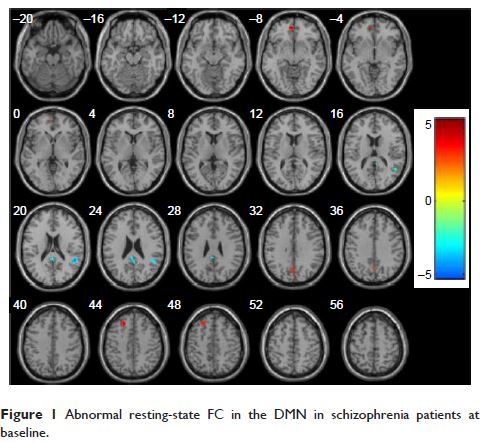108384
论文已发表
注册即可获取德孚的最新动态
IF 收录期刊
- 3.4 Breast Cancer (Dove Med Press)
- 3.2 Clin Epidemiol
- 2.6 Cancer Manag Res
- 2.9 Infect Drug Resist
- 3.7 Clin Interv Aging
- 5.1 Drug Des Dev Ther
- 3.1 Int J Chronic Obstr
- 6.6 Int J Nanomed
- 2.6 Int J Women's Health
- 2.9 Neuropsych Dis Treat
- 2.8 OncoTargets Ther
- 2.0 Patient Prefer Adher
- 2.2 Ther Clin Risk Manag
- 2.5 J Pain Res
- 3.0 Diabet Metab Synd Ob
- 3.2 Psychol Res Behav Ma
- 3.4 Nat Sci Sleep
- 1.8 Pharmgenomics Pers Med
- 2.0 Risk Manag Healthc Policy
- 4.1 J Inflamm Res
- 2.0 Int J Gen Med
- 3.4 J Hepatocell Carcinoma
- 3.0 J Asthma Allergy
- 2.2 Clin Cosmet Investig Dermatol
- 2.4 J Multidiscip Healthc

对早期精神分裂症进行抗精神病治疗后,默认模式网络和显着网络中的休息状态功能连通性的变化
Authors Wang Y, Tang W, Fan X, Zhang J, Geng D, Jiang K, Zhu D, Song Z, Xiao Z, Liu D
Received 30 September 2016
Accepted for publication 4 January 2017
Published 7 February 2017 Volume 2017:13 Pages 397—406
DOI https://doi.org/10.2147/NDT.S123598
Checked for plagiarism Yes
Review by Single-blind
Peer reviewers approved by Dr Colin Mak
Peer reviewer comments 2
Editor who approved publication: Professor Wai Kwong Tang
Objective: Abnormal resting-state functional connectivity (FC), particularly in the
default mode network (DMN) and the salience network (SN), has been reported in
schizophrenia, but little is known about the effects of antipsychotics on these
networks. The purpose of this study was to examine the effects of atypical
antipsychotics on DMN and SN and the relationship between these effects and
symptom improvement in patients with schizophrenia.
Methods: This was a prospective study of 33 patients
diagnosed with schizophrenia and treated with antipsychotics at Shanghai Mental
Health Center. Thirty-three healthy controls matched for age and gender were
recruited. All subjects underwent functional magnetic resonance imaging (fMRI).
Healthy controls were scanned only once; patients were scanned before and after
6–8 weeks of treatment.
Results: In the DMN, the patients exhibited increased FC after
treatment in the right superior temporal gyrus, right medial frontal gyrus, and
left superior frontal gyrus and decreased FC in the right posterior
cingulate/precuneus (P <0.005). In the
SN, the patients exhibited decreased FC in the right cerebellum anterior lobe
and left insula (P <0.005). The FC
in the right posterior cingulate/precuneus in the DMN negatively correlated
with the difference between the Clinical Global Impression (CGI) score
pre/post-treatment (r =–0.564, P =0.023) and negative trends with
the difference in the Positive and Negative Syndrome Scale (PANSS) total score
pre/post-treatment (r =–0.475, P =0.063) and the
difference in PANSS-positive symptom scores (r =–0.481, P =0.060).
Conclusion: These findings suggest that atypical antipsychotics
could regulate the FC of certain key brain regions within the DMN in
early-phase schizophrenia, which might be related to symptom improvement.
However, the effects of atypical antipsychotics on SN are less clear.
Keywords: schizophrenia, fMRI, default network,
salience network, antipsychotics
